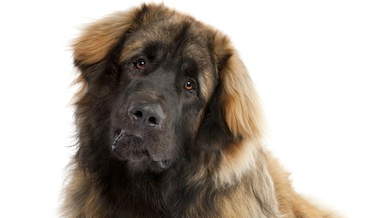How Does a Dog Get a Staph Infection?
A Staphylococcus bacterial infection can be deadly serious, but there are ways to minimize its spread and prevent the condition in your dog.

Dogs, cats and various other pets are often susceptible to the same sorts of diseases that humans are. Cancer, arthritis, and so on.
Staph infections are no different; both dogs and people can suffer from them, but how does a dog get a staph infection? The first thing we need to know is what exactly a staph infection is.
“Staph” stands for Staphylococcus. Both people and pets carry these bacteria on their skin, although there are different types of them. Normally, the staph bacteria just kind of hang out and do their own thing without disturbing the host.
However, when certain conditions present themselves, the staph bacteria jump on the opportunity to make a pest of themselves by dividing like crazy and causing irritation and skin rashes.
Don’t Guess When It Comes To Your Pet’s Care


Don’t Guess When It Comes To Your Pet’s Care
Causes
Conditions that would make it easier for a staph infection to take hold would be things like:
- Immune-compromising diseases
- Prior skin irritations
- Illness
- Fleas
Essentially, anything that is going to make the body have to fight harder to fend off a bacterial battle, such as an illness, or anything that has already caused skin irritation, like constant scratching from flea bites, can make conditions ideal for a staph bacteria to start spreading and becoming a problem.
Staph bacteria can cross from people to pets, including the type of staph that is resistant to most antibiotics. This type is known as Methicillin-Resistant Staphylococcus Aureus, or MRSA. It is not a more potent pathogen, but rather it has evolved to develop immunity to many types of antibiotics and is harder to treat.
Prevention
Prevention can go a long way toward keeping the staph bacteria at bay.
Simple good hygiene makes a world of difference. Practice proper hand washing, be aware of where your pet travels and, as gross as it sounds, don’t handle feces with bare hands.
Pets who have come from the veterinarian or have returned from a visit to a hospice may need their paws washed before offering to perform their “shake hands” trick, for example.
When you’re scooping the litter box or cleaning up the yard, you’ll want to wear gloves and make sure to wash your hands afterward.
Should you visit places that usually harbor bacteria, such as hospitals, nursing homes and veterinary offices, wash your hands — and your dog’s paws — afterward. Keep bedding, pillows and favorite chew toys washed.
In addition, aim to keep your pet flea-free. Not only is this more comfortable for them, but it also helps keep them from scratching at themselves so much that they cause irritation or an open wound. This will help prevent staph from taking hold.
In this video, a veterinarian explains staph infection and points out what a typical wound looks like on a dog:

Signs of Infection
How can you tell if your pup has become infected with staph?
In many cases, the signs are visible. You will see things like red lesions on the skin, often with pus-filled blisters and/or scabs surrounding the lesions. Your pet will be itchy, scratching constantly at the source of irritation.
Your dog may become lethargic, have a poor appetite and may eventually become feverish if the infection is allowed to go on unchecked. It is important to keep any wounds clean. If he has had surgery, for example, check the wound regularly for any sign of irritation.
Treatment
Regular staph infections are treated with antibiotics. In many cases, the veterinarian will give you an antibiotic lotion or cream to apply to your dog’s infected skin.
Keep in mind that MRSA does respond in many cases to a limited amount of antibiotics, so your veterinarian will be able to treat your dog even if his infection proves to be of the tougher strain.
So, how does a dog get a staph infection? The same way people do — poor hygiene, skin irritations, immune-compromising diseases and illnesses that weaken immune systems.
Keep your dog and his favorite spots clean, brush him regularly and keep an eye out for fleas and other pests. Most of all, wash those hands!
This pet health content was reviewed for accuracy by a veterinarian, Dr. Pippa Elliott, BVMS, MRCVS. It was last reviewed and updated Dec. 17, 2018.







